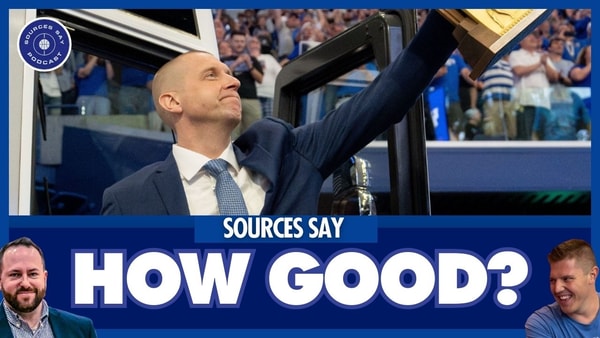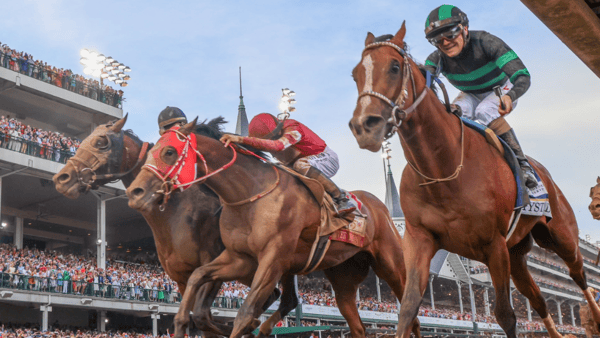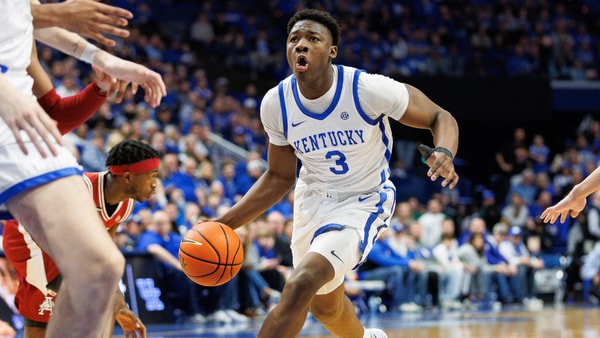
A good courtroom drama is hard to beat. The ingredients for a compelling narrative are there: the law, justice, guilt, innocence. In a courtroom drama, the stakes are organically high, the conflict clear, and the characters intensely motivated. All of this adds up to a kind of obvious appeal, and any number of directors have leveraged these pieces to create classics of American cinema.
Truth be told, it seems like it would be impossible to screw up a courtroom drama. And in a lot of ways, I think it pretty much is. I mean, not every movie that uses a courtroom as its centerpiece is great, necessarily, but they’re almost all at least watchable. If basic competence is the hallmark of the genre, then its most important variable is, without question, the climactic cross examination/closing argument/verdict scene. In fact, I would argue that there is a direct correlation between the quality of a courtroom drama’s “big scene” and the movie as a whole. A great piece of legal oratory can lift an average movie into greatness, while a dud can leave audiences underwhelmed, even if the rest of the film was really good.
So then, my main concern as far as this particular piece is concerned is thinking through what the best “big scenes” in courtroom dramas are, what makes them so great, and how they impact the quality of the movie they’re in, with the ultimate goal of figuring out which is the “best.” You might think that something like this is ultimately a contrived way to assign a ranking to nuanced pieces of art that resist easy classification. To which I would respond, “Hi, I’m Josh. Welcome to the internet.”
Anyway, let’s establish some criteria for what constitutes a “big scene” in a courtroom drama and some parameters for deciding what makes such a scene great.
A “big scene” has to be one where the outcome of the film’s main trial hinges on what’s happening in the scene. The only other criteria is that the scene has to take place in the actual courtroom. This seems axiomatic, but it assures that we stay focused on the courtroom portion of the courtroom drama, which is the only place our heads should be during a discussion like this.
The Contenders
Juror #10’s rant in
12 Angry Men
[embed]https://www.youtube.com/watch?v=TXlHKTPfLVA[/embed]
Yep, I’m violating one of my rules literally right away! If you don’t like it, grab a keyboard and get to typing your own list. Technically, this scene takes place inside the deliberation room at a courthouse
after all the courtroom stuff has played out. In it, an old man who has hinted at his deeply entrenched racism throughout the movie really lets his hate flag fly during a monologue about “them,” referring to the un-specified ethnic group the defendant belongs to. One by one, the other eleven jurors (even those most skeptical of the defendant’s innocence) turn their backs on the old man, leaving him out of breath and totally alone. His rant is a direct confrontation of the generalizations too many people are
still comfortable making about entire groups of people, and it’s one of the key moments in the jury’s slowly changing perspective.
Colonel Jessup’s cross-examination in
A Few Good Men
[embed]https://www.youtube.com/watch?v=_frM44bBMfA[/embed]
Is this the most famous courtroom scene ever? Probably so. How many times have you heard “You can’t handle the truth!” screamed at someone as part of a terrible joke? A lot, is my guess. But that shouldn’t detract from just how great this Tom Cruise-Jack Nicholson scene is. Maybe the most amazing part about it is the way Nicholson redirects the mischievous, rebellious energy of his early iconic roles into the sharp authoritarian menace of Colonel Jessup. It was probably the last time we got peak Nicholson, and he made sure we’d never forget the role.
Atticus Finch’s speech in
To Kill a Mockingbird
[embed]https://www.youtube.com/watch?v=HOocTXKPVVU[/embed]
The former English teacher in me wants this to be number one. And it could be. Gregory Peck’s note-perfect portrayal of Atticus Finch reaches its apex when, in a losing effort, he passionately decries racial prejudice during his defense of Tom Robinson, a black man falsely accused of rape. But the film’s most iconic moment occurs when Atticus leaves the courtroom, and the segregated crowd of onlookers rises out of respect and appreciation as he exits.
The Winner
Jake Brigance’s closing argument in
A Time to Kill
There are better movies named in this article, but there’s not a scene from any of them that combines stirring language, building tension, perfect editing, and emotional payoff like this scene from 1996’s
A Time to Kill.
[embed]https://www.youtube.com/watch?v=bKN1K2He8yg[/embed]
I don’t know when I first saw
A Time to Kill, but I know that when I did, the line “Now imagine she’s white” made me audibly gasp. On the one hand, it shouldn’t make a difference to the jury, but on the other, Jake knows that he
has to play that card at that moment to win the case. From the cuts between Matthew McConaughey’s face and the jurors’ to the way he recounts the horrific details of the crime perpetrated against the little girl whose father is on trial for murder to the way Donald Sutherland’s eyes snap open when the line is delivered, every moment of the scene is choreographed to perfection.
It’s grand, it’s melodramatic, and it may even be a touch too simple. In other words, it’s exactly what a great moment in a courtroom drama is supposed to be.
 A good courtroom drama is hard to beat. The ingredients for a compelling narrative are there: the law, justice, guilt, innocence. In a courtroom drama, the stakes are organically high, the conflict clear, and the characters intensely motivated. All of this adds up to a kind of obvious appeal, and any number of directors have leveraged these pieces to create classics of American cinema.
Truth be told, it seems like it would be impossible to screw up a courtroom drama. And in a lot of ways, I think it pretty much is. I mean, not every movie that uses a courtroom as its centerpiece is great, necessarily, but they’re almost all at least watchable. If basic competence is the hallmark of the genre, then its most important variable is, without question, the climactic cross examination/closing argument/verdict scene. In fact, I would argue that there is a direct correlation between the quality of a courtroom drama’s “big scene” and the movie as a whole. A great piece of legal oratory can lift an average movie into greatness, while a dud can leave audiences underwhelmed, even if the rest of the film was really good.
So then, my main concern as far as this particular piece is concerned is thinking through what the best “big scenes” in courtroom dramas are, what makes them so great, and how they impact the quality of the movie they’re in, with the ultimate goal of figuring out which is the “best.” You might think that something like this is ultimately a contrived way to assign a ranking to nuanced pieces of art that resist easy classification. To which I would respond, “Hi, I’m Josh. Welcome to the internet.”
Anyway, let’s establish some criteria for what constitutes a “big scene” in a courtroom drama and some parameters for deciding what makes such a scene great.
A “big scene” has to be one where the outcome of the film’s main trial hinges on what’s happening in the scene. The only other criteria is that the scene has to take place in the actual courtroom. This seems axiomatic, but it assures that we stay focused on the courtroom portion of the courtroom drama, which is the only place our heads should be during a discussion like this.
The Contenders
Juror #10’s rant in 12 Angry Men
[embed]https://www.youtube.com/watch?v=TXlHKTPfLVA[/embed]
Yep, I’m violating one of my rules literally right away! If you don’t like it, grab a keyboard and get to typing your own list. Technically, this scene takes place inside the deliberation room at a courthouse after all the courtroom stuff has played out. In it, an old man who has hinted at his deeply entrenched racism throughout the movie really lets his hate flag fly during a monologue about “them,” referring to the un-specified ethnic group the defendant belongs to. One by one, the other eleven jurors (even those most skeptical of the defendant’s innocence) turn their backs on the old man, leaving him out of breath and totally alone. His rant is a direct confrontation of the generalizations too many people are still comfortable making about entire groups of people, and it’s one of the key moments in the jury’s slowly changing perspective.
Colonel Jessup’s cross-examination in A Few Good Men
[embed]https://www.youtube.com/watch?v=_frM44bBMfA[/embed]
Is this the most famous courtroom scene ever? Probably so. How many times have you heard “You can’t handle the truth!” screamed at someone as part of a terrible joke? A lot, is my guess. But that shouldn’t detract from just how great this Tom Cruise-Jack Nicholson scene is. Maybe the most amazing part about it is the way Nicholson redirects the mischievous, rebellious energy of his early iconic roles into the sharp authoritarian menace of Colonel Jessup. It was probably the last time we got peak Nicholson, and he made sure we’d never forget the role.
Atticus Finch’s speech in To Kill a Mockingbird
[embed]https://www.youtube.com/watch?v=HOocTXKPVVU[/embed]
The former English teacher in me wants this to be number one. And it could be. Gregory Peck’s note-perfect portrayal of Atticus Finch reaches its apex when, in a losing effort, he passionately decries racial prejudice during his defense of Tom Robinson, a black man falsely accused of rape. But the film’s most iconic moment occurs when Atticus leaves the courtroom, and the segregated crowd of onlookers rises out of respect and appreciation as he exits.
The Winner
Jake Brigance’s closing argument in A Time to Kill
There are better movies named in this article, but there’s not a scene from any of them that combines stirring language, building tension, perfect editing, and emotional payoff like this scene from 1996’s A Time to Kill.
[embed]https://www.youtube.com/watch?v=bKN1K2He8yg[/embed]
I don’t know when I first saw A Time to Kill, but I know that when I did, the line “Now imagine she’s white” made me audibly gasp. On the one hand, it shouldn’t make a difference to the jury, but on the other, Jake knows that he has to play that card at that moment to win the case. From the cuts between Matthew McConaughey’s face and the jurors’ to the way he recounts the horrific details of the crime perpetrated against the little girl whose father is on trial for murder to the way Donald Sutherland’s eyes snap open when the line is delivered, every moment of the scene is choreographed to perfection.
It’s grand, it’s melodramatic, and it may even be a touch too simple. In other words, it’s exactly what a great moment in a courtroom drama is supposed to be.
A good courtroom drama is hard to beat. The ingredients for a compelling narrative are there: the law, justice, guilt, innocence. In a courtroom drama, the stakes are organically high, the conflict clear, and the characters intensely motivated. All of this adds up to a kind of obvious appeal, and any number of directors have leveraged these pieces to create classics of American cinema.
Truth be told, it seems like it would be impossible to screw up a courtroom drama. And in a lot of ways, I think it pretty much is. I mean, not every movie that uses a courtroom as its centerpiece is great, necessarily, but they’re almost all at least watchable. If basic competence is the hallmark of the genre, then its most important variable is, without question, the climactic cross examination/closing argument/verdict scene. In fact, I would argue that there is a direct correlation between the quality of a courtroom drama’s “big scene” and the movie as a whole. A great piece of legal oratory can lift an average movie into greatness, while a dud can leave audiences underwhelmed, even if the rest of the film was really good.
So then, my main concern as far as this particular piece is concerned is thinking through what the best “big scenes” in courtroom dramas are, what makes them so great, and how they impact the quality of the movie they’re in, with the ultimate goal of figuring out which is the “best.” You might think that something like this is ultimately a contrived way to assign a ranking to nuanced pieces of art that resist easy classification. To which I would respond, “Hi, I’m Josh. Welcome to the internet.”
Anyway, let’s establish some criteria for what constitutes a “big scene” in a courtroom drama and some parameters for deciding what makes such a scene great.
A “big scene” has to be one where the outcome of the film’s main trial hinges on what’s happening in the scene. The only other criteria is that the scene has to take place in the actual courtroom. This seems axiomatic, but it assures that we stay focused on the courtroom portion of the courtroom drama, which is the only place our heads should be during a discussion like this.
The Contenders
Juror #10’s rant in 12 Angry Men
[embed]https://www.youtube.com/watch?v=TXlHKTPfLVA[/embed]
Yep, I’m violating one of my rules literally right away! If you don’t like it, grab a keyboard and get to typing your own list. Technically, this scene takes place inside the deliberation room at a courthouse after all the courtroom stuff has played out. In it, an old man who has hinted at his deeply entrenched racism throughout the movie really lets his hate flag fly during a monologue about “them,” referring to the un-specified ethnic group the defendant belongs to. One by one, the other eleven jurors (even those most skeptical of the defendant’s innocence) turn their backs on the old man, leaving him out of breath and totally alone. His rant is a direct confrontation of the generalizations too many people are still comfortable making about entire groups of people, and it’s one of the key moments in the jury’s slowly changing perspective.
Colonel Jessup’s cross-examination in A Few Good Men
[embed]https://www.youtube.com/watch?v=_frM44bBMfA[/embed]
Is this the most famous courtroom scene ever? Probably so. How many times have you heard “You can’t handle the truth!” screamed at someone as part of a terrible joke? A lot, is my guess. But that shouldn’t detract from just how great this Tom Cruise-Jack Nicholson scene is. Maybe the most amazing part about it is the way Nicholson redirects the mischievous, rebellious energy of his early iconic roles into the sharp authoritarian menace of Colonel Jessup. It was probably the last time we got peak Nicholson, and he made sure we’d never forget the role.
Atticus Finch’s speech in To Kill a Mockingbird
[embed]https://www.youtube.com/watch?v=HOocTXKPVVU[/embed]
The former English teacher in me wants this to be number one. And it could be. Gregory Peck’s note-perfect portrayal of Atticus Finch reaches its apex when, in a losing effort, he passionately decries racial prejudice during his defense of Tom Robinson, a black man falsely accused of rape. But the film’s most iconic moment occurs when Atticus leaves the courtroom, and the segregated crowd of onlookers rises out of respect and appreciation as he exits.
The Winner
Jake Brigance’s closing argument in A Time to Kill
There are better movies named in this article, but there’s not a scene from any of them that combines stirring language, building tension, perfect editing, and emotional payoff like this scene from 1996’s A Time to Kill.
[embed]https://www.youtube.com/watch?v=bKN1K2He8yg[/embed]
I don’t know when I first saw A Time to Kill, but I know that when I did, the line “Now imagine she’s white” made me audibly gasp. On the one hand, it shouldn’t make a difference to the jury, but on the other, Jake knows that he has to play that card at that moment to win the case. From the cuts between Matthew McConaughey’s face and the jurors’ to the way he recounts the horrific details of the crime perpetrated against the little girl whose father is on trial for murder to the way Donald Sutherland’s eyes snap open when the line is delivered, every moment of the scene is choreographed to perfection.
It’s grand, it’s melodramatic, and it may even be a touch too simple. In other words, it’s exactly what a great moment in a courtroom drama is supposed to be.







Discuss This Article
Comments have moved.
Join the conversation and talk about this article and all things Kentucky Sports in the new KSR Message Board.
KSBoard